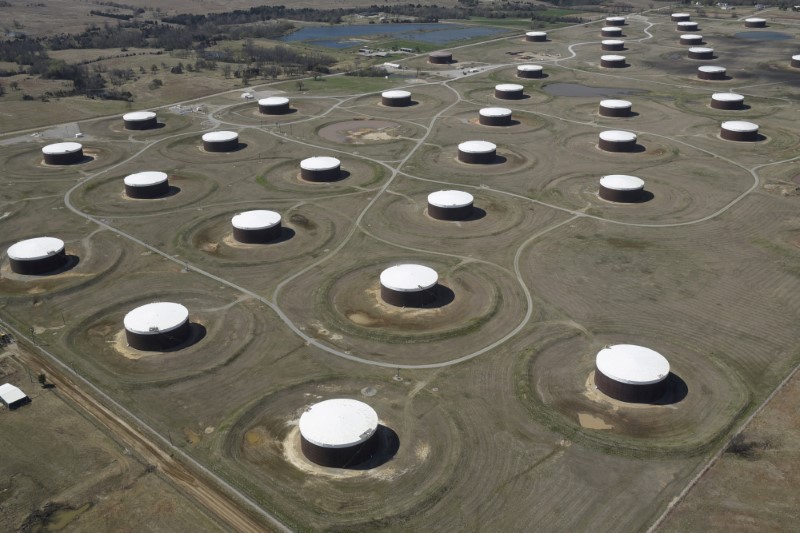By Stephanie Kelly
NEW YORK (Reuters) - Oil prices fell on Thursday as investors took profits after this week's rally and as U.S. stock markets fell, but losses were limited by the continuing efforts of OPEC and its allies to curb supplies.
Brent crude futures fell 56 cents to settle at $68.91 a barrel, a 0.8 percent loss, having retreated from a session peak of $69.70, close to its highest level since early February.
U.S. West Texas Intermediate (WTI) crude futures fell 87 cents to settle at $64.30 a barrel, a 1.3 percent loss. WTI traded between $64.23 a barrel and $65.74 a barrel during the session.
Oil prices have risen in the past two weeks, boosted by a weaker U.S. dollar and tensions between Iran and Saudi Arabia that raised concern about Middle East supplies already restricted by an OPEC-led production pact.
Prices recorded their biggest one-day gain since November on Wednesday after an unexpected drop in U.S. crude inventories.
A drop in U.S. equities on Thursday also weighed on oil prices as U.S. President Donald Trump signed a presidential memorandum on Thursday that could impose tariffs on up to $60 billion of imports from China.
"Fears of a trade tit-for-tat with China is a component to oil's weakness today insofar as it might impact accelerating demand," said Anthony Headrick, energy market analyst and commodity futures broker at CHS Hedging LLC in Inver Grove Heights, Minnesota.
The oil derivatives market shows most activity in the past week has centred around options to buy, known as "call options," which give the holder the possibility to purchase oil at a given price by a certain date.
Call options to buy oil at $80 a barrel by the end of next month have changed hands more often in the past week than options at any other price level.
The U.S. Energy Information Administration said on Wednesday that U.S. crude inventories fell 2.6 million barrels last week, compared with analysts' expectations for an increase of 2.6 million barrels.
The decline was driven by lower crude imports and higher refinery runs.
But the confident mood in the oil market has been tempered by U.S. crude production, which climbed to a record 10.4 million barrels per day last week, putting U.S. output ahead of Saudi Arabia and closing in on Russia's 11 million bpd.
"We are still viewing rapidly rising production into record high territory as a latent bearish consideration that will only be accentuated by this renewed high pricing environment," Jim Ritterbusch, president of Ritterbusch and Associates, said in a note.
U.S. production growth has partly been countered by the deal to cut output by the Organization of the Petroleum Exporting Countries, Russia and their allies. The agreement has run since the start of 2017 and is due to expire at the end of 2018.

U.S. crude's discount to Brent widened to as much as $4.65 a barrel on Thursday, its biggest discount since late January.